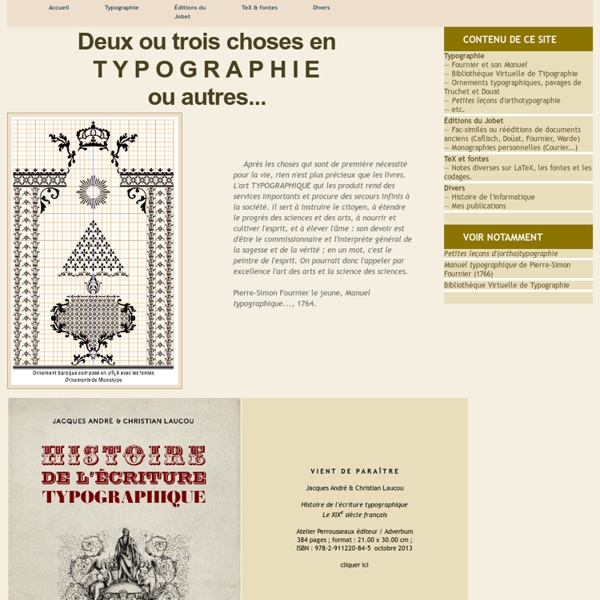



Histoire de l'écriture typographique : Le XIXe siècle français, ouvrage, Atelier Perrousseaux, ANDRÉ Jacques LAUCOU Christian LAUCOU ChristianANDRÉ Jacques A l'heure où le graphiste chinois Xu Bing publie « Une histoire sans mots », un roman exclusivement composé d'icônettes (Grasset, 2013), la parution du dernier volume de la série consacrée à l'Histoire de l'Ecriture typographique intervient à point pour interroger un vecteur d’expression multiséculaire qui semble subir une mutation profonde depuis son inscription dans l'univers informatique : le caractère typographique. Au-delà des techniques nouvelles que Jacques André et Christian Laucou détaillent avec beaucoup de soin, les pages de cet album offrent un voyage inédit à travers les esthétiques du livre et de la presse au cours du siècle qui, plus que tout autre, imprima « à tour de bras ». Dans quel cadre prend place votre histoire de l’écriture typographique au XIX• siècle ? Christian Laucou : Oui. Elle s'insère donc plus dans l'histoire de l'écriture que dans celle des techniques, bien qu'ici les sujets soient étroitement liés.
Information et signalétique 30 janvier 2012 (mis à jour le 17 septembre 2015) Saint-Etienne Métropole, Ville de Saint-Etienne, Pour une signalétique accessible à tous - Guide méthodologique de conception d’une signalétique accessible à tous destiné aux décideurs publics et aux concepteurs, 2014 Afnor, référentiel de bonnes pratiques BP P96-104 "Signalétique de repérage et d’orientation dans les établissements recevant du public", 2014 Certu, Piéton, usager des lieux publics : un jalonnement pour tous. Le concevoir, le mettre en oeuvre et l’entretenir, 2013 Certu, Handicaps mentaux, cognitifs et psychiques : quelles pistes pour améliorer l’accessibilité ? Certu, Accessibilité et handicap mental - La démarche "Design et accessibilité" appliquée à la réhabilitation du stade Geoffroy Guichard à Saint-Etienne, 2013 Communauté urbaine de Dunkerque, Principes à respecter pour concevoir une signalétique lisible, visible et compréhensible par tous, 2013 Inpes, Informer les personnes sourdes ou malentendantes, 2012